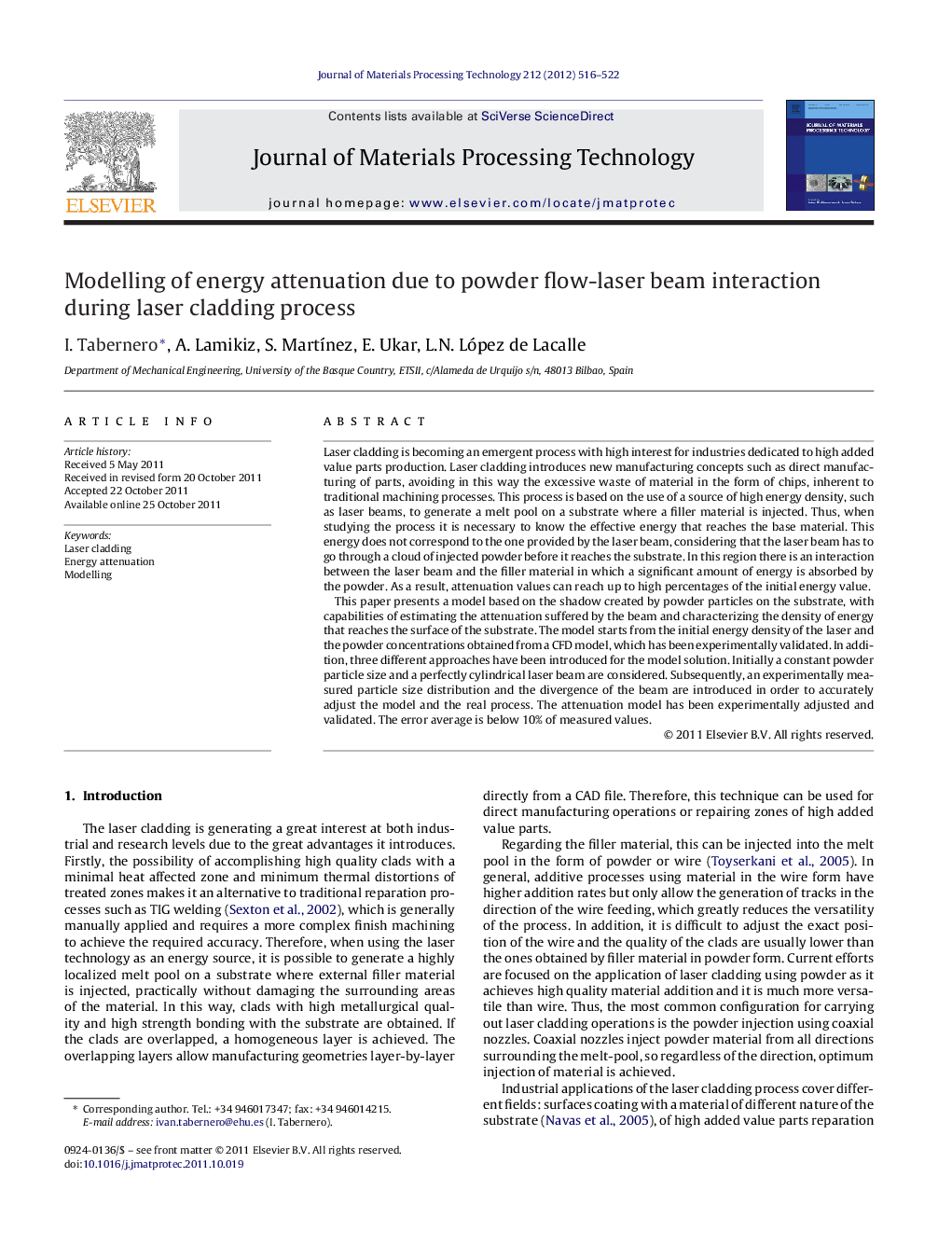| کد مقاله | کد نشریه | سال انتشار | مقاله انگلیسی | نسخه تمام متن |
|---|---|---|---|---|
| 795987 | 902768 | 2012 | 7 صفحه PDF | دانلود رایگان |

Laser cladding is becoming an emergent process with high interest for industries dedicated to high added value parts production. Laser cladding introduces new manufacturing concepts such as direct manufacturing of parts, avoiding in this way the excessive waste of material in the form of chips, inherent to traditional machining processes. This process is based on the use of a source of high energy density, such as laser beams, to generate a melt pool on a substrate where a filler material is injected. Thus, when studying the process it is necessary to know the effective energy that reaches the base material. This energy does not correspond to the one provided by the laser beam, considering that the laser beam has to go through a cloud of injected powder before it reaches the substrate. In this region there is an interaction between the laser beam and the filler material in which a significant amount of energy is absorbed by the powder. As a result, attenuation values can reach up to high percentages of the initial energy value.This paper presents a model based on the shadow created by powder particles on the substrate, with capabilities of estimating the attenuation suffered by the beam and characterizing the density of energy that reaches the surface of the substrate. The model starts from the initial energy density of the laser and the powder concentrations obtained from a CFD model, which has been experimentally validated. In addition, three different approaches have been introduced for the model solution. Initially a constant powder particle size and a perfectly cylindrical laser beam are considered. Subsequently, an experimentally measured particle size distribution and the divergence of the beam are introduced in order to accurately adjust the model and the real process. The attenuation model has been experimentally adjusted and validated. The error average is below 10% of measured values.
Journal: Journal of Materials Processing Technology - Volume 212, Issue 2, February 2012, Pages 516–522